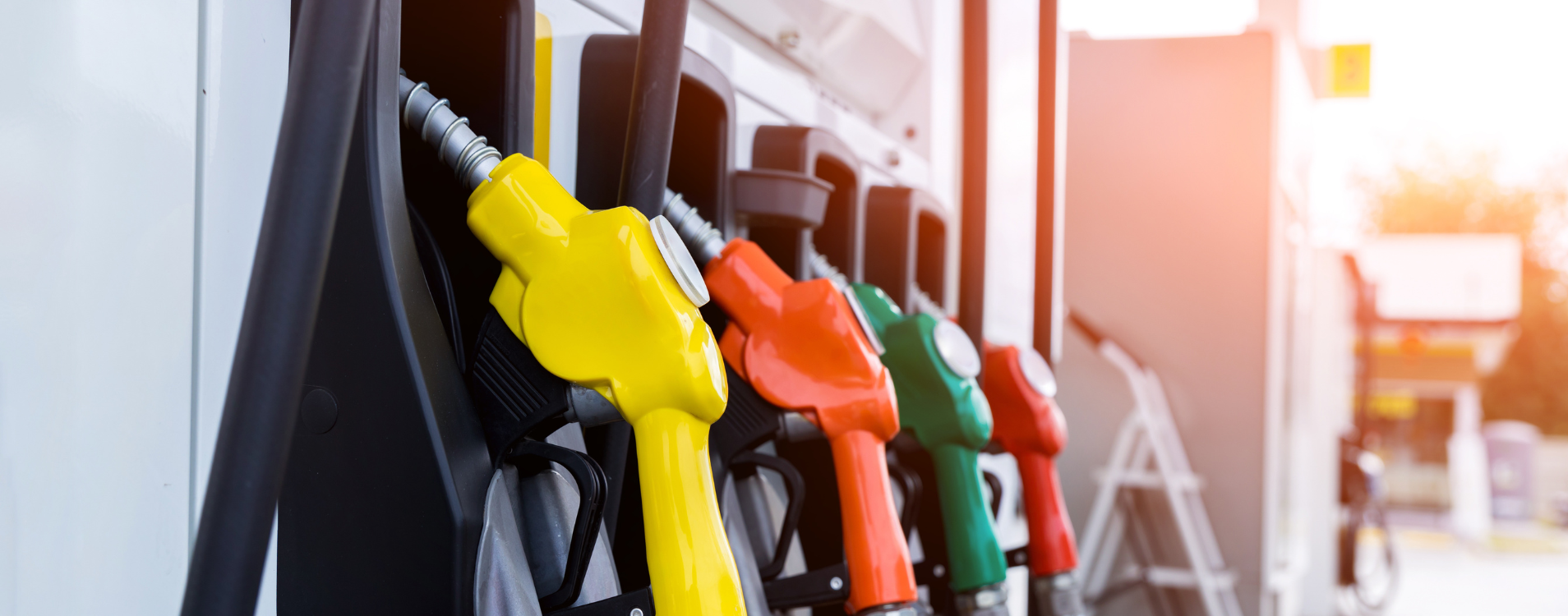A Trucking Business Owner’s Guide to Diesel Prices and Saving Money
Recently, the trucking industry has witnessed a significant surge in diesel prices, underscoring the unpredictable nature of fuel costs. On July 15, 2023, the average diesel price rested at $3.897, yet within just a month, that figure skyrocketed to an eye-watering $4.330 by August 15, 2023.
In the face of such volatility, understanding the variables influencing diesel costs becomes increasingly important, especially considering that fuel expenses can account for up to 25% of a trucking company’s operating costs. From global crude oil markets and supply-demand dynamics to political events and environmental regulations, an array of factors play their part.
In this blog, we’ll lay out some strategies you can use to make informed fuel purchases, including a breakdown of fuel cards, fuel types, technology, and more.
What factors affect diesel prices?
Ever wondered why diesel prices can change wildly from day to day? According to the US Energy Information Administration (EIA), these are the main factors that determine diesel prices:
1. Cost of Crude Oil
Diesel is refined from crude oil at refineries. The average US refinery can produce between 11 and 12 gallons of diesel for every 42-gallon barrel of crude oil. This is why the cost of crude oil is the number 1 factor that affects diesel prices.
2. Demand Worldwide
Diesel vehicles are more popular in other parts of the world. When they need more diesel, it can affect prices here too. If demand rises in other countries, it can nudge US prices up as well.
3. Matching Supply and Demand
Think of diesel like a seesaw between how much is available (supply) and how much is needed (demand). When that balance tips, prices can swing. Depending on how much diesel businesses and people need, prices might go up or down.
4. Seasons Changes
When winter arrives, more people need heating fuels. Diesel and heating oil are pretty similar, so their prices can jump together. It’s like when everyone wants the same toy around the holidays – the price goes up.
5. Geographical Location
Imagine a map: diesel costs more the farther you get from where it’s made. A lot of diesel comes from the Gulf Coast, so it’s cheaper there. But on the West Coast, where it’s harder to bring diesel in, prices can be higher.
6. Local Market Conditions
Think about your routes. How many diesel sellers are there? What about local costs and taxes? These things can change how much you pay. If there’s a lot of competition, prices might be lower. But if everything costs more where you are, that can make prices go up.
Understanding these pieces of the puzzle can help you make smarter choices when you fuel up.
How to Save Money When Buying Fuel
There are a lot of things carriers can do to save money on fuel for their businesses, including negotiating fuel surcharges, upgrading equipment, and implementing driving techniques to improve fuel efficiency. We’ll go into those topics in more detail in future articles, but how you buy fuel is a critical part of the picture. Here are ways you can save money when buying diesel for your truck(s):
Get a fuel card
Fuel cards, also known as fleet cards, are a great tool for owner-operators and fleet managers seeking to cut fuel costs. They offer a range of benefits that contribute to better financial management and operational efficiency.
The most popular benefit of fuel cards is the discounts they offer. But that’s not the only way fuel cards can help you save money.
Fuel cards provide a means to closely track and manage fuel spending across different vehicles, routes, and drivers, which is important for optimizing a trucking operation’s efficiency. They can also make International Fuel Tax Agreement (IFTA) reporting easier by tracking all fuel purchase locations.
Fleet cards that offer lines of credit improve a business’s cash flow, helping to manage fuel purchases even before receiving customer payments. Moreover, using a fuel card with a line of credit can help establish and improve your business’s credit score, giving you access to better interest rates for purchasing equipment.
To find the right fuel card, there are many factors to consider. These include:
- Discounts based on affiliations with specific truck stops and regions
- The card’s fee structure can be complex and vary between providers.
- The program’s network, i.e. where you can use the card.
- Features, reporting, and overall ease of use
The Bobtail Zero Mastercard® offers a line of credit for purchasing fuel with absolutely zero fees and can be used anywhere Mastercard is accepted. Our platform gives you visibility into your fuel spending and allows you to easily control cards. Approval can take just minutes, so apply today!

Understand fuel
Like gasoline, diesel has two main types to choose from: Diesel 1 (1-D) and Diesel 2 (2-D). The categorization of diesel is based on cetane levels. 2-D is typically used for semi trucks traveling long distances at consistent speeds because it is the. However, 1-D performs better in very cold conditions, so most fueling stations will offer a blend, depending on the local weather.
It’s also important to understand the fuel weight so you can avoid overweight tickets. Diesel weighs about 7 pounds/gallon. When you pick up a load, be sure to do some quick math to know how much fuel you can buy without going over your weight limit. Consider the distribution of that weight across all of your equipment, as well. Taking these factors into account can save you on expensive tickets and fines! Finally, remember that fuel expands as it heats. Particularly on hot days, it’s important not to over-fuel your truck to avoid fuel leaking out onto the road.
Use technology
In this digital age, applications have emerged to guide truckers toward the most cost-effective fueling locations.
Fuel price apps or fuel finders can serve as virtual treasure maps, leading truckers to the best deals on diesel in their vicinity or on their route. Apps like GasBuddy, Waze, and Trucker Path highlight nearby gas stations with the best prices. With real-time updates and user-contributed data, you’re equipped with the latest information on which retailers offer the most value.
While these apps provide a fantastic starting point, remember they’re just one tool in your arsenal. Prices can change quickly, and relying solely on app information might lead to unexpected surprises at the pump. A good rule of thumb is to use these apps as a guide but not as the gospel truth. A quick call to the gas station can be your final confirmation. Truckers in the know often ring up stations to double-check the accuracy of prices before rolling in for a fill-up.
Understand IFTA
Understanding the true cost of fuel goes beyond what you see on the retailer’s display.
IFTA (International Fuel Tax Agreement) ensures that carriers pay their fair share of fuel taxes, considering the miles they travel in different states.
When you fuel up, part of the money you pay goes to fuel taxes. But the amount you pay (or are owed) in taxes at the end of each quarter can vary depending on where you fuel up. Some states have higher fuel taxes, while others have lower ones. So, even if the pump price looks the same, the actual cost of the fuel could be different.
For example, let’s say you’re comparing diesel prices between Grand Rapids, MI, and Gary, IN. You see that in both cities, diesel is $4.40/gallon. You might think that means it doesn’t matter where you fill up.
However, Michigan’s fuel tax is $0.486 and Indiana’s fuel tax is $0.550. Discounting the state fuel tax, the diesel in Grand Rapids costs $3.914, and in Gary, it costs $3.85. So on a trip from Grand Rapids to Indianapolis, it makes more sense to fuel up in Gary, knowing that you’ll get some of that tax back as a credit at the end of the quarter.
For more on IFTA, read this blog next: Everything You Need To Know About IFTA
Fuel prices can be as unpredictable as the weather. These fluctuations make up a major chunk of trucking costs. Understanding the reasons behind these price changes is like having a secret code for smarter fuel decisions. By staying informed and using tools smartly, truckers can navigate the road ahead with better control over fuel costs.
Opinions, advice, services, or other information or content expressed or contributed here by customers, users, or others, are those of the respective author(s) or contributor(s) and do not necessarily state or reflect those of The Bancorp Bank, N.A., (“Bank”). Bank is not responsible for the accuracy of any content provided by author(s) or contributor(s).



